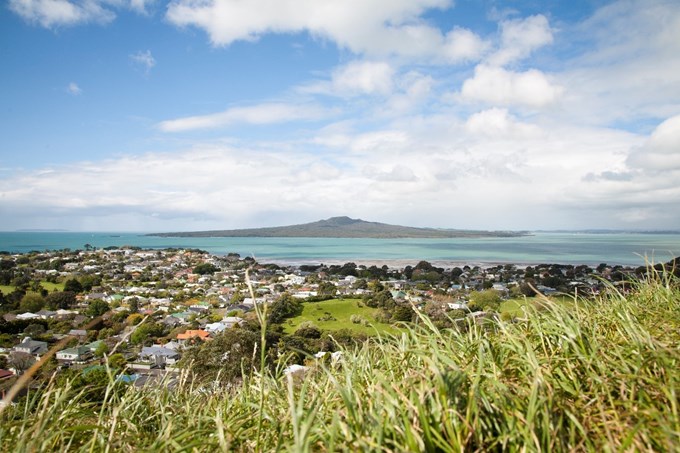Tāmaki Makaurau Auckland is the home of many mountains. They are a discernible feature of our city landscape and always guarantee a superb view of the Auckland isthmus whichever maunga (mountain) you choose to climb.
Not only are the maunga great visual landmarks, they also hold an important place in the historical, spiritual, ancestral and culturally identity of the iwi and hapū Ngā Mana Whenua o Tāmaki Makaurau (the mana whenua tribes of Auckland).
Many of them are former pā (fortified village) sites which can be seen in the terraced areas around the maunga as well as other archaelogical features.
They stand as a constant reminder of Auckland’s key point of difference from other cities.
With a number of the maunga part of Auckland’s green spaces, exploring them is a great way to stretch the legs and enjoy getting into nature.
But rather than heading to the more well know maunga, try visiting some that aren’t as popular. Here are five that are worth exploring.

Te Kōpuke / Tītīkōpuke / Mount St John
Located in the quiet suburb of Epsom, most people have no idea this wee gem even exists. Nestled just behind Dilworth College the best place to access Te Kōpuke / Tītīkōpuke Mt St John is from Market Road. Apart from the small hum from the neighbouring Southern Motorway you’d swear you were in the country and not near Newmarket.
Te Tātua a Riukiuta / Big King
Te Tātua a Riukiuta Big King is the remaining maunga that gave Three Kings its name. With the other maunga quarried and ending up as gutters around Auckland this magnificent king now stands alone. Access can be found from the back of the Three Kings shopping complex or from Duke Street. An impressive reminder of why protecting our maunga is important.
Ōtāhuhu / Mount Richmond
The suburb of Ōtāhuhu is named after this maunga. Another former pā site, Ōtāhuhu Mt Richmond retains some good examples of Māori earthworks including kumara pits and terracing. Another key feature of this maunga is two 50m wide craters. Access to the park that Ōtāhuhu Mt Richmond lies in is from Atkinson Avenue or Great South Road.

Takarunga / Mount Victoria
One of two maunga in Devonport, Takarunga Mt Victoria is the highest volcano on the North Shore. Another former pā, remnants of pā terraces and pits are visible on the upper slopes.
Used by Pākehā as a military poistion against a feared Russian invasion at the end of the 19th centruy, Takarunga has one of the last remaining disappearing guns in the world. Takarunga is a great place for stunning views across the Waitemata to the city centre and is also a great viewing place for watching ships arriving and departing. Access can easily be made from the Devonport shops which lie at the foot of the maunga.

Te Pane o Mataoho / Te Ara Pueru / Māngere Mountain
Sitting in the heart of Māngere Bridge lies Te Pane o Mataoho / Te Ara Pueru / Māngere Mountain. Best access to the maunga is from Coronation Road just outside the Māngere Mountain Education Trust and along from the former house of King Tāwhio, the second Māori king. It is well worth planning a guided walk with the Trust volunteers.
You’ll learn not just of the volcano itself but also of the lives of Māori who called it home as you walk around the maunga. Te Pane o Mataoho / Te Ara Pueru / Māngere Mountain has a great example of a tholoid (plug) in the middle of the main crater. However, the plug itself is considered tapu (sacred) so please don’t climb it. Book in a walk and you could find out why it is tapu.
Protect our kauri
Kauri dieback in Auckland is a serious problem and it’s important we all play our part to prevent the spread of the disease.
If you enter or leave a forest/area with native trees anywhere across the region, here are three easy steps you need to remember:
- Scrub– clean all soil off your footwear and gear.
- Spray– your footwear and gear with disinfectant at every cleaning station you encounter. Kauri dieback can be spread by just a pinhead of soil.
- Stay– on open tracks and off kauri roots.
Always check the Auckland Council kauri webpage before going for a walk to find out what tracks are currently closed.


